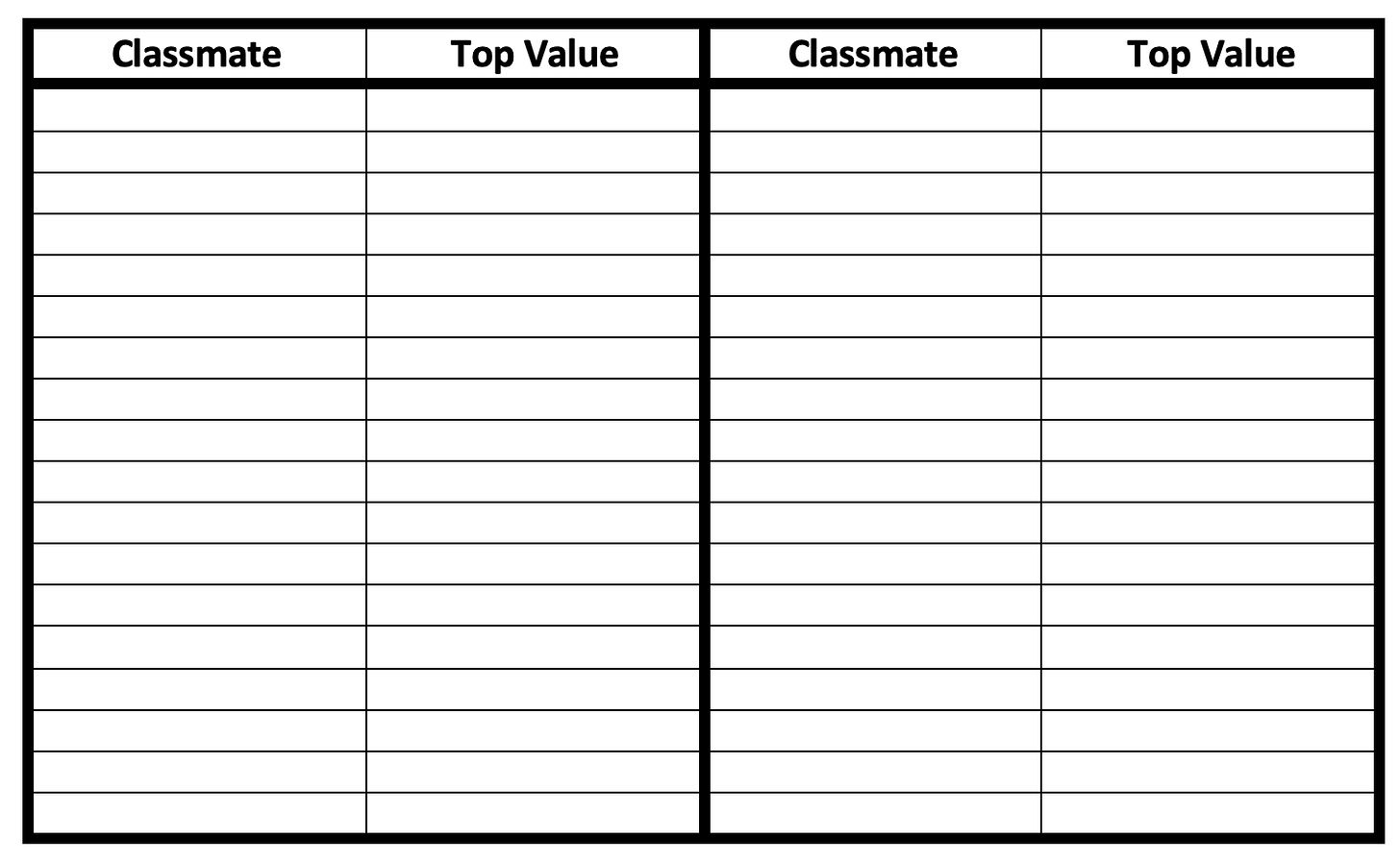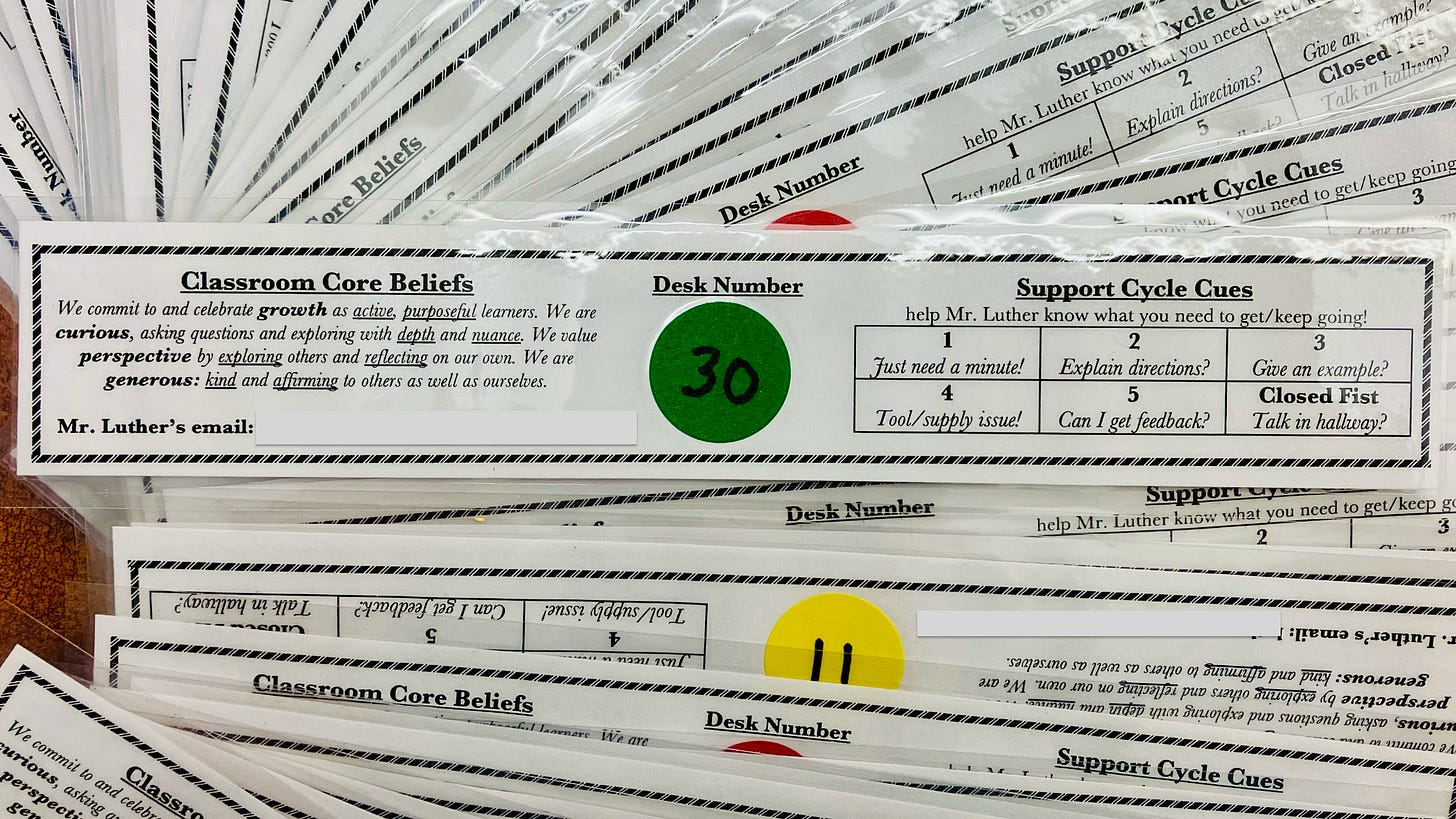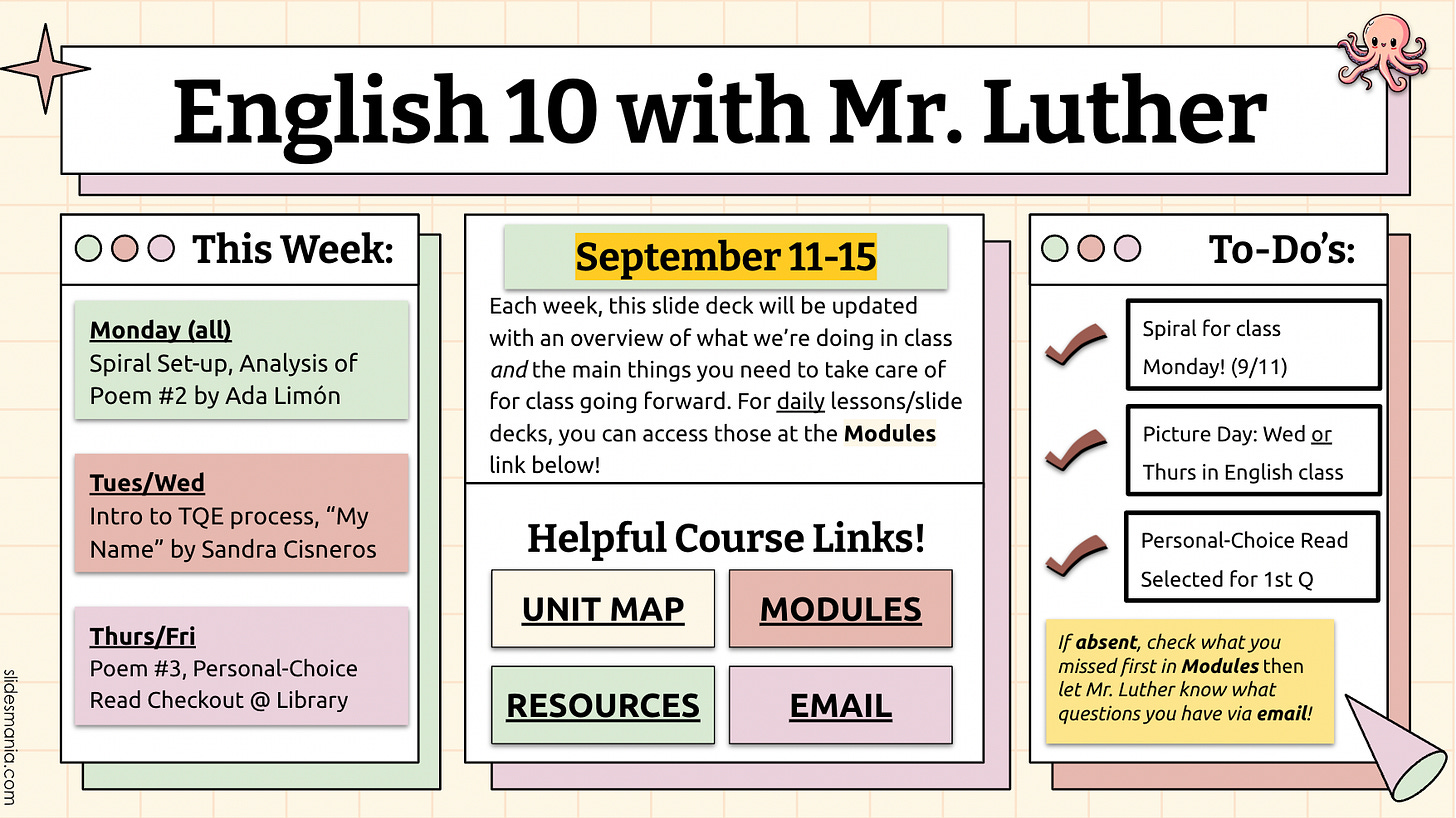4 Classroom Set-up "Hacks" I Love
(even if I hate the word "hacks" when it comes to teaching)
Before I share some resources/systems in this post that I find really helpful in my own classroom, especially early on in the year, allow me to begin briefly with a bit of a rant about the word hacks and why it bothers me:
There is a tendency, I think, to message to teachers across education that if only you find the right tools and tricks…and if only you implement them strategically and with fidelity…then all the problems of a classroom are solvable. If only.
Too many students in a classroom? Them: “No worries! Try this hack!”
Not enough resources for students? Them: “No worries! Try this hack!”
Struggling with student phone usage? Them: “No worries! Try this hack!”
Us?
Hacks don’t solve systemic issues and inequities in a sustainable way.
Rant over.
Of course, I’m about to do just what I just ranted against: offer four “hacks” that are helpful in my classroom. But I wanted to acknowledge first that none of them do anything to address the myriad, severe challenges in education right now that teachers are facing.
They are helpful for me, and I hope they can be helpful for you.
However, I don’t pretend for one second that they “solve” the very real, systemic challenges of teaching in anyway. And I wanted to make that clear first.
Regardless, without further ado, here are four things that help a lot in our classroom:
Class Rosters for Each Student
The What: in the second week of school (after roster changes have relatively settled and students have let me know about any nicknames/preferences as far as their names), students each get a hard copy roster of all of their classmates to tape into their spiral notebooks—and then as a class we go through and record each other’s top values alongside those names.
The Why: working in a school now with 2000 students, I realized that there were many things different than my previous experiences at smaller schools—including how many students were complete strangers to each other when they walked into the classroom. Fortunately, one of my incredible teaching colleagues shared this idea with me of adding a classroom roster for each student to have in their spiral, and I then added the “Top Value” column to take our opening activity of the year and make it more tangible within the classroom space. Names matter and values matter, so why not make them as visible as possible?
The Resource: in-class activity we use to collect student top values
Laminated, Strategic Desk Labels
The What: each year I create desk labels that include the following items:
our classroom core beliefs (which are integrated into class surveys, peer nominations, etc. in our room—so I know this might not go on yours!)
my school email address (blanked out in above photo)
support cycle cues (a new system that I’m really trying to lean into)
and—perhaps most importantly—a desk number and color
I make sure they are laminated, too, before affixing them to every desk in the room before students arrive.
The Why: I’m a big fan of creating structure to start the year, including seating charts—but also in a way that leads to a lot of collaboration. Having a numbered system that combines colors allows for lots of creative ways to build conversation, both in their seating groups and in moving around the room (example: you can label each corner of your room a color for a quick “four corners” activity built-in). I would recommend using these labels to include whatever is most important for your classroom, too, as it is nice to have that information right in front of students. Most importantly, though, laminating makes them last—at least a lot longer than the non-laminated versions I would see get decimated again and again in my early years teaching!
(Note: going forward I’ll be adding a letter signifying the color for any student with vision impairments/limitations thanks to a point made on #teachertwitter)
The Resource: a not-too-expensive personal laminator that has been worth every penny a hundred times over
Master Google Sheet with Student Names/Key Info
The What: a Google Sheet that I prioritize at the beginning of the year in getting completed and keeping updated as much as possible with each of my class periods—filling in their top values and any notes I get from them on their initial surveys (a section included in it but not pictured above). Then as the year goes on, whenever I notice strengths or make positive contacts, I make a note on the tracker to see who I have celebrated and how.
The Why: First off, having an updated list of all your classes on a Google Sheet makes life incredibly easy for lots of other “teacher things”—including tracking data, looking up information, keeping track of family communication, etc. That said, for me it is the prioritizing of values/strengths on the sheet itself that sets this tool apart by pushing my attention towards seeing and affirming those things. As a teacher, I believe in trying as much as possible to use tools and systems that push me towards my own values and priorities around making students feel seen and celebrated, and this Google Sheet template helps a lot with that, I’ve found!
The Resource: a blank template to create your own tracker that emphasizes values and strengths
“Go-To” Slide Deck with Weekly Course Details
The What: a “go-to” slide deck that includes super-brief daily overviews, a “Student To-Do” list, and links to the core resources students might need (including a unit calendar that is included in the slide deck itself. The slide deck is linked on the main course page online and also via a QR code in the classroom and is sent home to student families. Each week the slide gets duplicated and placed at the front so it can be updated with current information—with the previous weeks are accessible by scrolling through it.
The Why: in previous years, I found myself spending far too much time updating course details and information via bigger, more-convoluted platforms like classroom websites or Canvas (which I still love!), so I wanted to simplify my own process and make it more accessible for students and families alike. This saves me time but also keeps it very simple for anyone curious about what we’re doing in class on a given day—and all in one place that is much easier for me to keep updated. The goal? Better for me, better for students, better for families.
Resource: blank template copy you can use to create your own
Resource #2: new version of the template (see links/picture below)
A Few Closing Things
While we are talking about “hacks,” hopefully you checked out Jim’s piece about his own system for checking in with students frequently within his classroom via exit tickets—a must-read, in my opinion, and something I’m working to incorporate in my own room.
Additionally, I did want to link to a piece on Cult of Pedagogy on another core classroom system in my room around student reflection that I went in-depth discussing how that works throughout the school year and, in the podcast that went with the article, why I believe so much in it going forward. If you like stuff you read here on The Broken Copier, you also probably will be interested in that!
Finally, I’ll just add this: I’m only three days into the school year, but they were three really good days. I’m exhausted in the best of ways, and so excited for everything ahead—and when I get a chance to catch my breath, I’ll keep trying to share out some resources, thoughts, and strategies here.
Hope all of your school years are off to a great start, too!
—Marcus







Thank you! 🙏
Do you change the seating chart through the year?